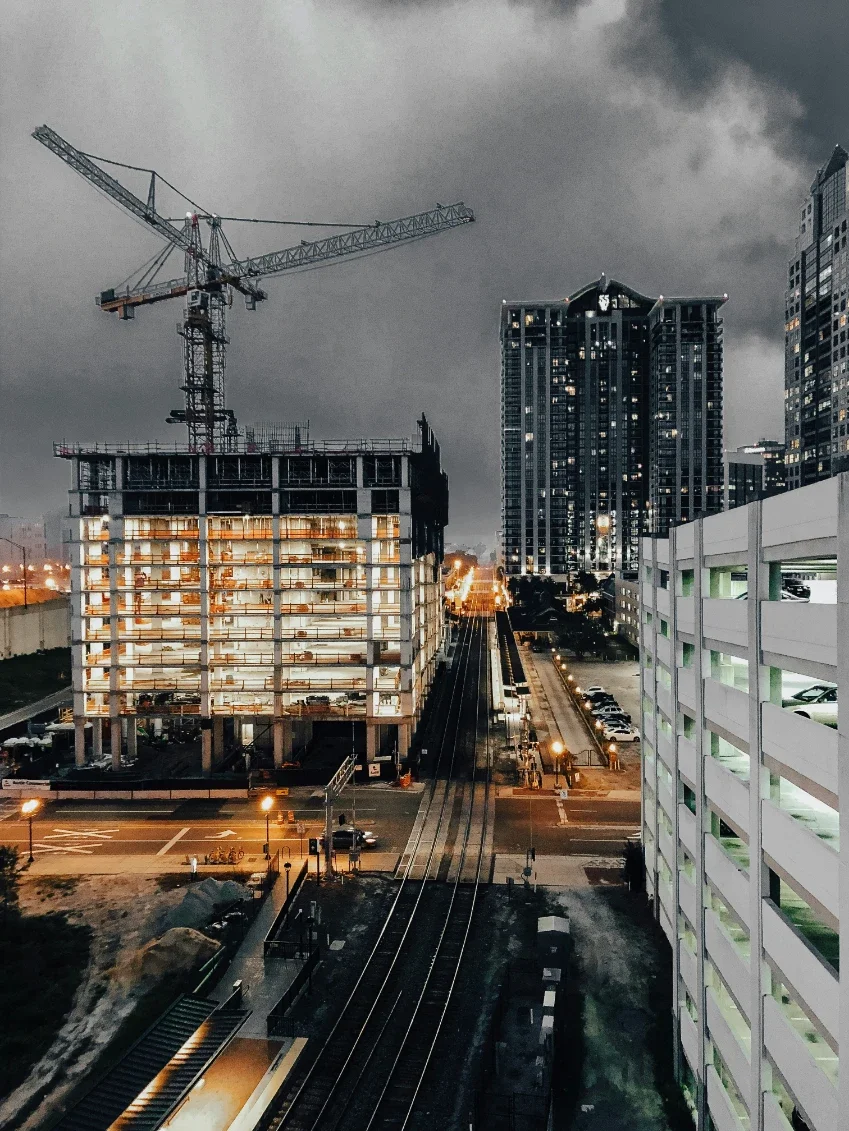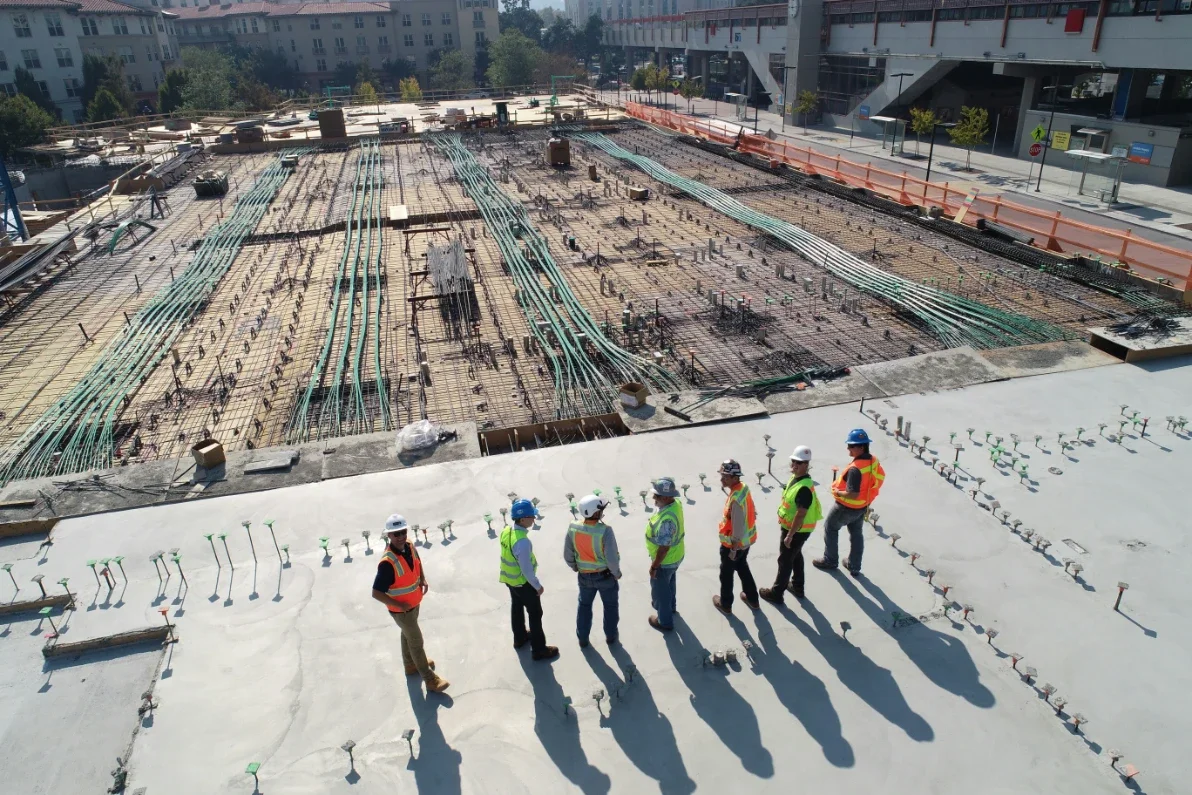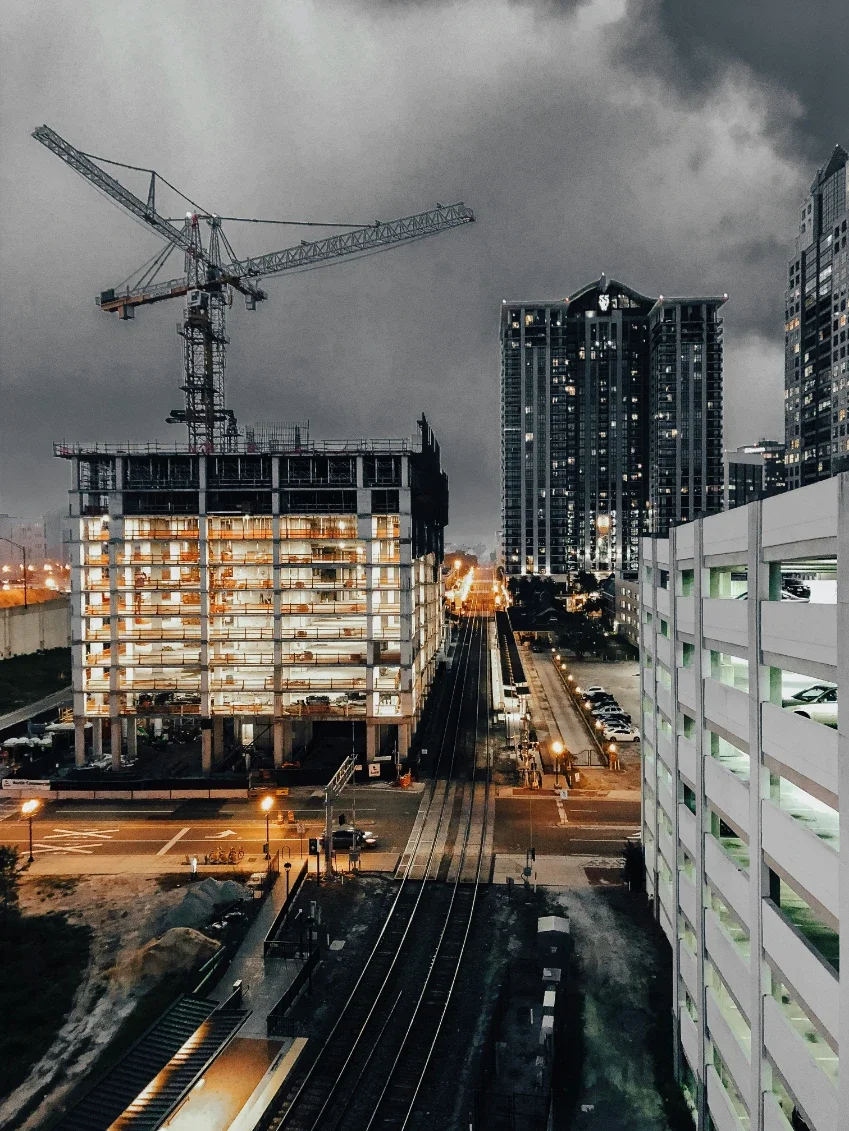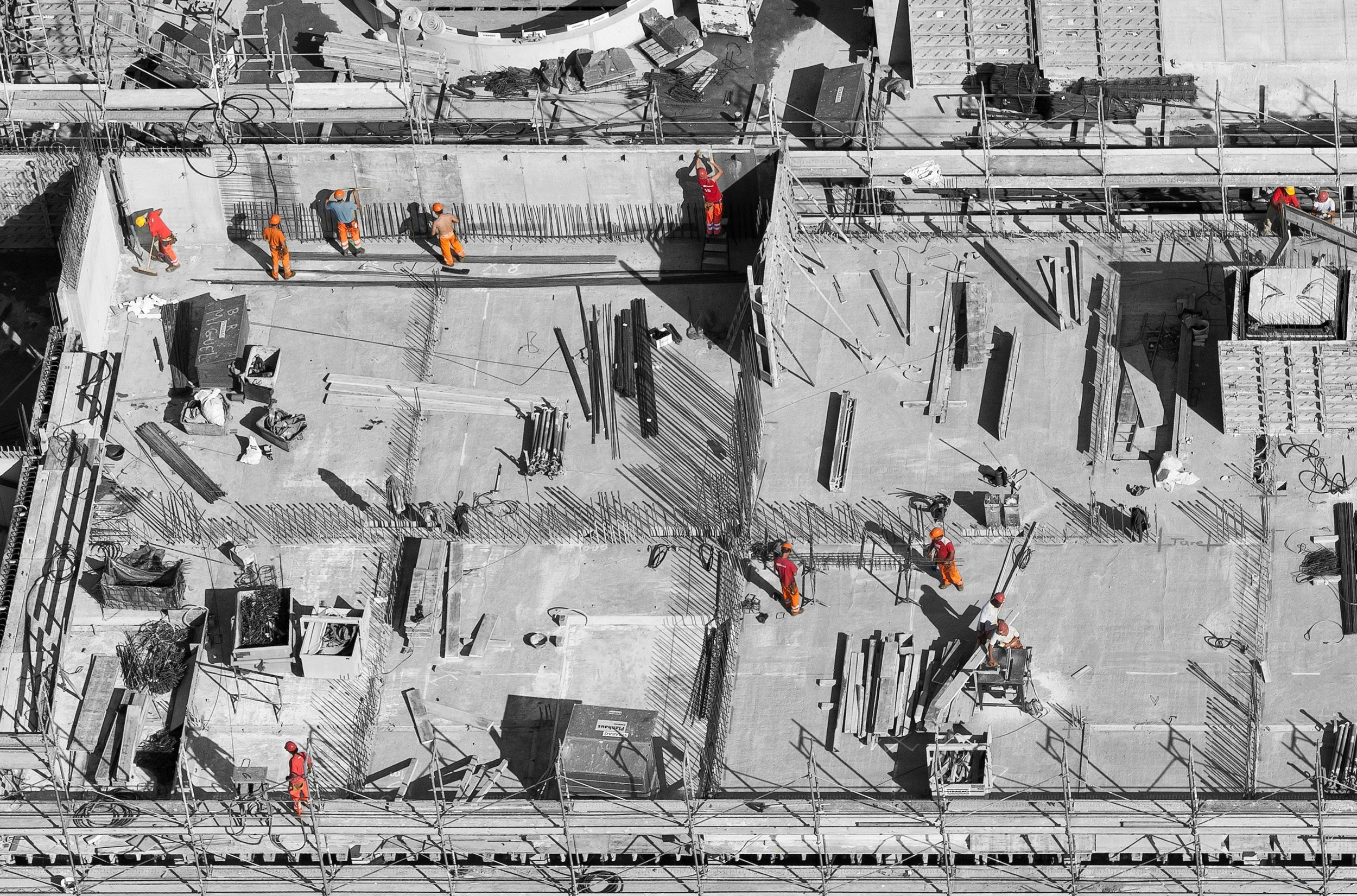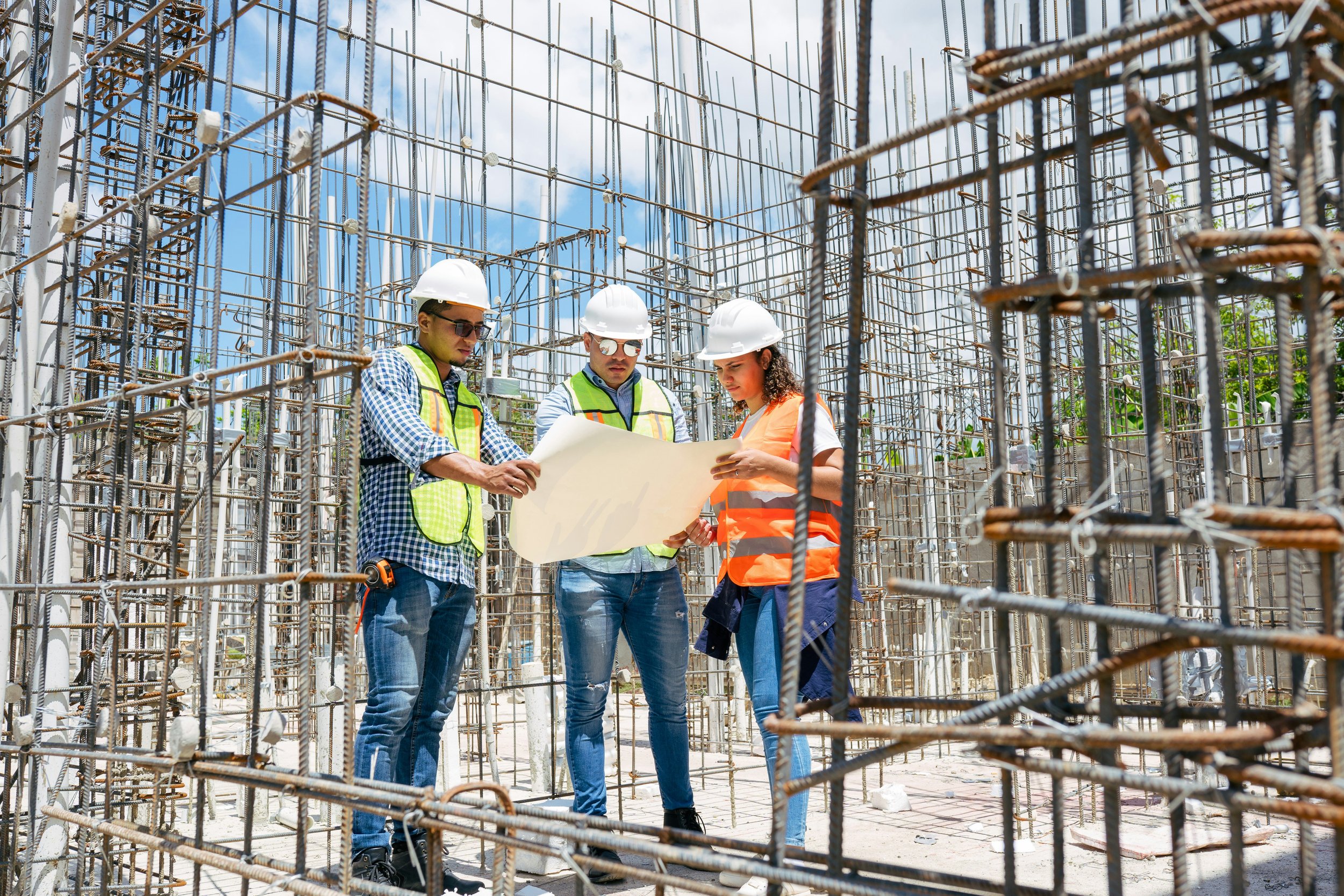7 Key Construction Project Management Software Features in 2026
Discover the top construction project management software features in 2026 that enhance collaboration, efficiency, and on-site performance.
The construction industry is also undergoing a basic digital transformation. It was once ruled by man and paperwork, but today it embraces technology to cope with increasing demands for precision, comprehensibility, and speed. Its contemporary building projects involve multiple contractors, real-time data transmissions, and regulatory complexities, all of which require reliable software to coordinate efficiently.
Investing in the development of custom construction software allows companies to integrate precisely the features and integrations that drive their business. Online platforms make communication between architects, contractors, engineers, and clients the norm, eliminating silos and miscommunication. From planning to site inspection, every process can be tracked and optimized with software. With increasing project size and complexity, automation and real-time collaboration have become essentials to stay in the game.
Construction firms still waste huge amounts of resources on delays, rework, and coordination inefficiencies. Inefficiently handled documentation, incorrect material estimates, and disconnected teams lead to wasted time and excess expenses. Modern construction management software features directly address these pain points by unifying workflows, centralizing data, and offering actionable insights.
Real-Time Project Tracking and Collaboration
As project timelines tighten, stakeholders need immediate visibility into every stage of construction. Real-time project tracking has become one of the most critical construction project management software features, transforming how teams plan, execute, and monitor progress.
Benefits for Project Managers and Field Teams
Real-time data synchronization enables the monitoring of multiple job sites simultaneously by managers. Information can be updated directly from mobiles by fieldworkers, and project managers can detect delays, quality issues, or shortages ahead of time. Such transparency eliminates costly downtime and supports fact-based decisions.
Cloud-Based Dashboards and Live Updates
Cloud infrastructure shares the same current information across all stakeholders – from design offices to site managers. Visual dashboards display KPIs such as material consumption, work completion rate, and budget status. Integrated communication tools enable collaboration teams to leave comments on issues in context, avoiding feedback loops and errors.
Resource & Equipment Management
Optimization of equipment and human resources determines the profitability and the duration of the project. Modern platforms contain advanced modules for tracking and optimizing resources to guarantee that all resources are tapped.
Monitoring Tools, Machinery, and Workforce Allocation
A centralized platform tracks every tool, vehicle, or equipment and allocates it to respective tasks. GPS and IoT sensors assist in tracking usage, maintenance time, and working hours. For human resources, the managers are able to allocate teams depending on the level of expertise and the priority of the project, ensuring a balance of workflow at optimal levels.
Reducing Idle Time and Optimizing Usage
Computerized notification alerts supervisors when equipment is sitting idle or needs maintenance. Predictive analytics detect usage patterns to allow companies to rent or re-assign resources more efficiently. These capabilities remove waste, contain cost, and add margin on projects.
Integrated Budgeting and Cost Control
In a margin-driven business, cost control is just as critical as construction quality. Robust budgeting capability in management software puts accuracy and transparency into cost tracking.
Real-Time Expense Tracking
Integrate modules tie expenses to project milestones, allowing real-time visibility into where money is being spent. Material purchases, subcontractor payments, and labor fees are tracked automatically, reducing manual error and administrative hassle.
Preventing Budget Overruns with Smart Analytics
Predictive analytics gauges suggested versus actual spend and warns of discrepancies beforehand, preventing overruns and supporting data-driven forecasting. It allows data-informed forecasts through correlating finance and performance metrics, enabling organizations to manage profitability while improving strategic planning.
Document and Blueprint Management
It has been problematic to handle the mountain of paper in construction, from plans to regulatory certificates, for decades. Electronic document control is now strictly required for precision and accountability.
Centralized File Storage and Version Control
All documents are stored in a secure, centralized repository to which they may be accessed by authorized personnel. Version control provides teams with the ability to collaborate on the latest revisions of designs without the risk of collaborating with older plans. Permissions and audit trails maintain transparency and traceability for all project documents.
Accessibility for Both Office and On-Site Teams
With cloud document systems, engineers and field staff have access to drawings, technical specs, or photos simultaneously from any device. This simplified access streamlines coordination and minimizes downtime caused by lost or outdated information.
Mobile Access and Offline Functionality
Construction rarely happens in ideal connectivity conditions. Remote sites often lack stable internet, making features of construction dispatch software that support offline operations invaluable.
Importance for Field Workers and Remote Sites
Mobile-first interfaces allow supervisors and crews to enter information, take photos, and record progress even when offline. On reconnecting, all updates will then sync automatically. This offers a seamless flow of information, real-time accuracy of reports, and collaboration with real-time project requirements – anywhere.
Health, Safety, and Compliance Tracking
Safety is always a top priority in every construction environment. Computerized compliance tracking systems build health and safety into regular operations, reducing the likelihood of accidents and infractions.
Ensuring Regulatory Compliance and Risk Management
Automated checklists, reporting software for incidents, and reminder inspections guarantee compliance with local and global standards. Managers can monitor safety indicators in real-time and investigate chronic issues to enhance protocols. Integrating safety information into project dashboards fosters a culture of proactive responsibility and reduces potential liabilities.
Data Visualization and Reporting
With dozens of parallel activities occurring across different locations, decision-makers require clear, consolidated insights. Visual reporting tools translate raw data into meaningful, actionable information.
Dashboards Showing KPIs and Progress Metrics
Interactive dashboards present project status indicators, from schedule adherence to resource consumption, in readily comprehensible formats. Executives have a bird's eye view of progress, compare site performance, and align strategic goals with operating facts.
Integrating BI Tools for Better Decision-Making
Integration with business intelligence (BI) systems facilitates deeper analysis of financial, operational, and safety information. By correlating metrics at a glance, stakeholders build patterns, predict issues, and drive decision-making that optimizes efficiency and reduces costs.
Future-Ready Additions
While current systems have already transformed construction management, the next generation of technology will continue to shape the manner in which projects are conducted.
AI-Driven Forecasting
Artificial intelligence makes predictive scheduling possible, which identifies prospective delays or shortages of materials before they happen. Machine learning algorithms improve labor planning, schedules for the delivery of materials, and cost estimation using historical data, which improves project reliability and minimizes waste.
IoT Sensors and Automation in Construction Management
The rise of connected equipment and IoT sensors allows real-time tracking of environmental conditions, structural integrity, and asset utilization. When paired with automation and RPA in property management, these tools reduce manual intervention, enhance safety, and ensure full operational visibility across large construction sites.
Conclusion
Construction digitalization is no longer a question of competitive edge – it's a necessity. The greatest management platforms combine real-time monitoring, predictive analytics, and collaboration under one unified ecosystem. They make it possible for teams to work smart, remain compliant, and react quickly to project transformation.
Lastly, success is achieved by selecting or employing a platform that harmoniously fits the unique processes of your organization. Build an answer that satisfies not only the needs of today but also expands tomorrow with challenges – a platform engineered for performance, transparency, and sustained growth.
